In this article, we are going to go over the basic grow tent setup for cannabis or any other vegetable or plant. Growing your own cannabis is an amazing experience, and using products like Reefertilizer can make it much simpler and foolproof.
I’m going to explain all the set up and tools required for a smell free and safe grow whether you’re growing one plant or twenty. Make sure to bookmark this page for future reference.
Now, let’s get started!
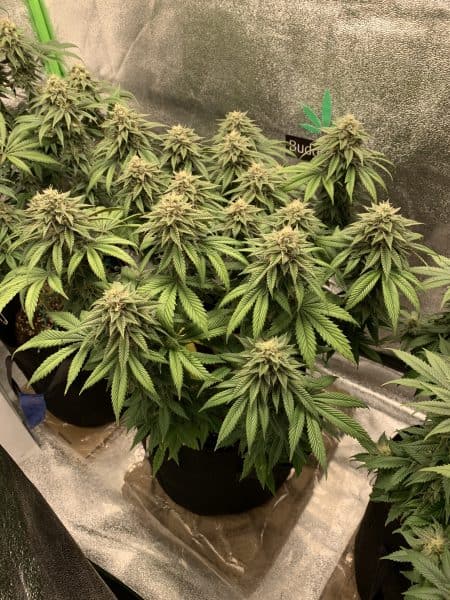
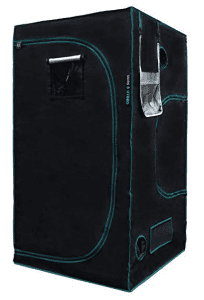
Cannabis Grow Tent
Your grow tent is the first thing you will need to set up. A grow tent usually consists of a metal frame and a nylon outer shell. The inside of the tent is covered in reflective material, which greatly improves the efficiency of the lights in your tent. The shell also prevents light from bleeding out. The tent will also have sealable holes for venting and wiring. There are many different grow tent kit styles available online or at your local hydroponic store. A good quality tent will last for years. Setting up a grow tent isn’t much more difficult than the set up of a tent for camping.
What grow tent size is right for me?
When it comes to choosing the right size grow tent for you, there are a handful of things to consider.
First of all, there’s the number of plants you’re growing, and the size of those plants.
The training strategies you plan on using are also a factor, and you’ll have to leave extra room for the lights and other equipment. Let’s handle these things one at a time.
Number of plants
How many plants do you want to grow?
If you’re growing in a legal area and doing everything above-board, the law will limit you to a handful of plants (three to twelve in legal US states, and four in most of Canada).
Simplified recommendations for grow tent size based on number of plants would be:
- 1 plant: a 2’x2’ grow tent will be sufficient if you do some cropping and low-stress training.
But, if you use a 4’x4’ or even 5’x5’ tent, your plant may grow large enough that the extra room will be useful.
- 2 plants: a 2’x2’ grow tent will fit two small cannabis plants, like autoflowers.
Grow tents with a rectangular footprint might be a better fit for two plants, if you can find one.
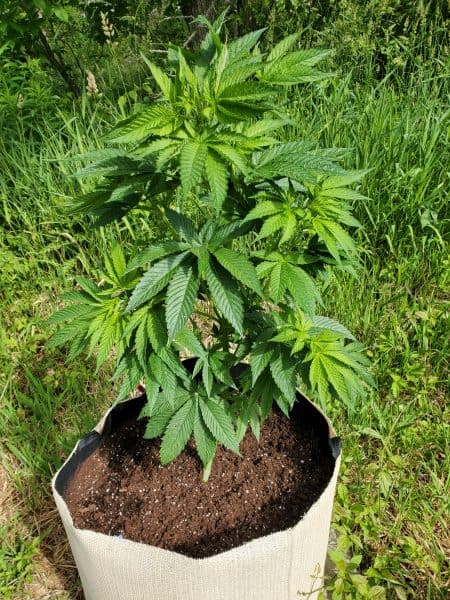
- 3-4 plants: 4’x4’ should be good for 3-4 plants.
- 5-6 plants: 4’x6’, 4’x8’, or 5’x5’ sized grow tents will hold 5-6 plants.
Draw up a diagram and think about how you want to arrange your plants inside the tent before you make a decision!
- 10-12 plants: If we say that the average full-grown cannabis plant takes up about four square feet, you’ll want 40-50 square feet for plants plus equipment and access room.
If you want a square tent, look for something 7’x7’ or larger.
Best Size Grow Tent for Your Desired Number of Cannabis Plants
If you plan on only growing one plant, you might want to consider building a Space Bucket.
Keep in mind that these recommendations are given assuming that you are growing each of your plants to around “average” size.
If you are going to do a Sea of Green (SOG) or grow some really big plants, make sure you plan accordingly.
Sea of Green
A Sea of Green is when instead of growing plants to their normal size, you grow a lot of really small plants, each given minimal veg time.
When this technique is used, each plant should end up filling about one square foot of space. But, that doesn’t mean it’s a good idea to put one plant in every single square foot of your grow tent!
Remember that you’ll still need to store some other equipment in the tent as well, and you need to leave yourself room so that you can access the plants and get a decent view from most angles so that you can do routine inspections for pests or other health problems.
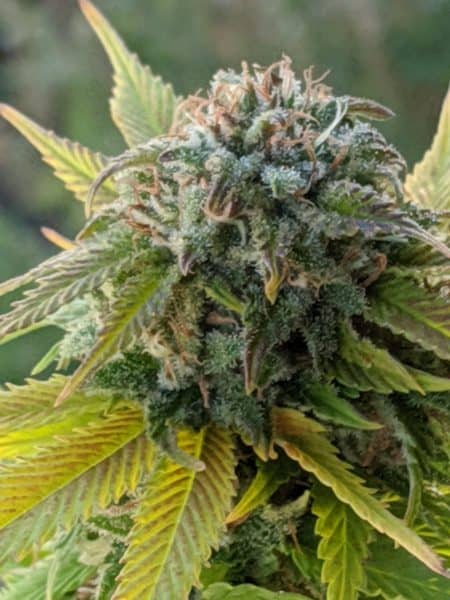
Before you waste money on a setup that’s the wrong size, draw a diagram to scale in a notebook to make sure there’s room for everything.
Or, if the room that will house your grow tent is already cleared out, you can map it out full-scale on the floor with some masking tape.
Plant Size
Up until now, we’ve been talking about “average-sized” plants.
Of course, when autoflowering strains might grow as small as a foot and a half and other strains can grow to over ten feet tall, there’s a lot of room on either side of average.
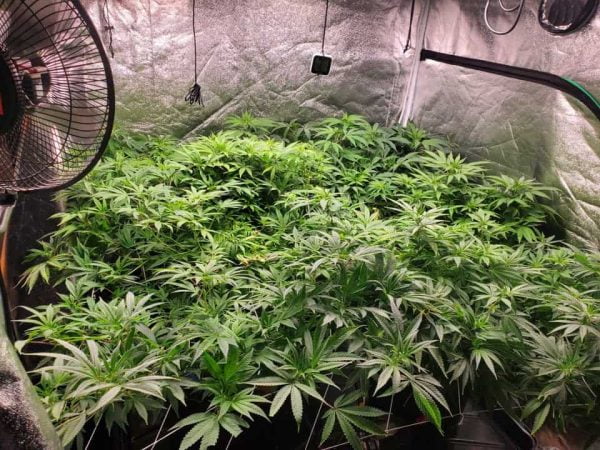
Obviously, if the room you’re putting the grow tent in doesn’t have a lot of space, you’re going to have to fit the tent to the room.
But then, luckily, you’ll be able to fit your plants to the tent.
If your space is short but wide, grow autoflowering strains or do some ScrOGging or super cropping.
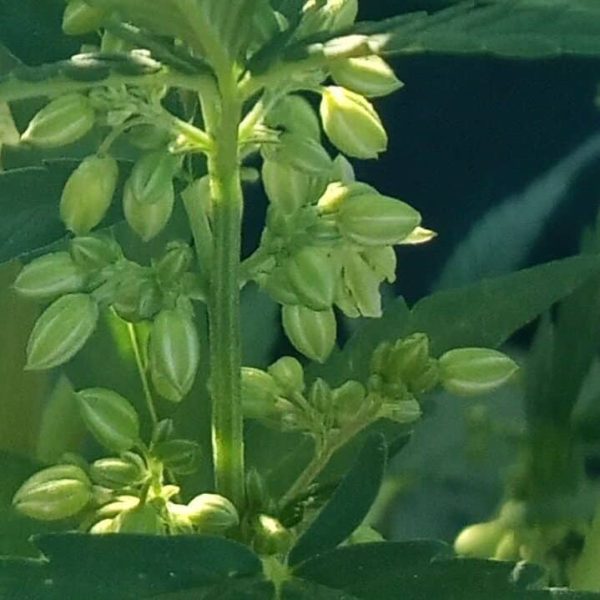
Tall space with a small footprint? Try to find a sativa-dominant strain to grow.
You can train your plant to fit your space, but what if you have more space than you need?
Should you grow a small number of plants as big as you can, or grow a larger number of smaller plants? Well, it depends on the situation.
Advantages of a few large plants
- If you are only legally allowed to have a handful of plants at one time, growing those plants as big as possible will get you the biggest total yield.
- It’s less effort to feed and water one or two plants than ten, even if they are bigger.
- Larger plants grow larger buds, and final product is often more potent.
- Cannabis seeds are expensive, so growing each plant as big as possible may get you the best bang for your buck.
Advantages of more small plants
- The grow cycle is shorter, so you can harvest earlier.
- You won’t need as much vertical space.
- You won’t have to do nearly as much pruning and trimming.
Other Grow Tent Considerations
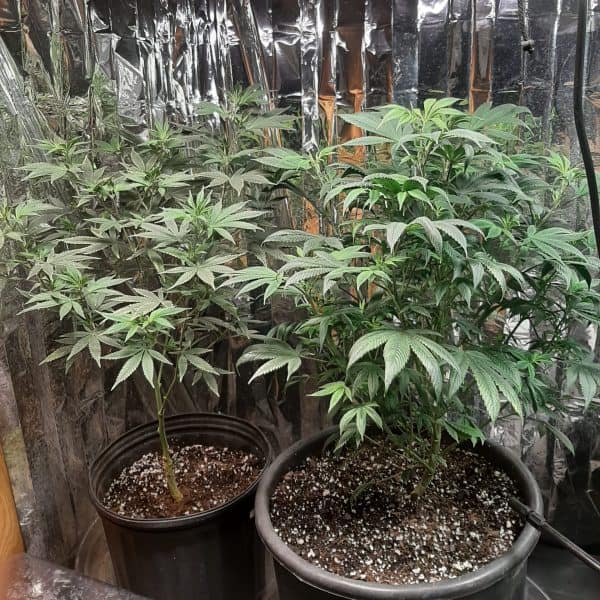
Once you know what size tent you need for the plants you want to grow, there are a few more things you should consider.
For one, don’t forget that the plants aren’t the only thing you need room for in your grow tent setup.
You also need to fit in grow lights (with enough distance between the lights and your plants’ canopy that the plant doesn’t get burned), ventilation equipment to keep air flowing and smells under control, and the tools you use in the grow room.
Finally, remember that the larger the grow tent, the steeper the cost.
So, if you’re on a tight budget, you may want to stick with something smaller at first.
Extractor Fan for Your Grow Tent
Grow tent fan kits usually come in three sizes: 4″, 6″ or 8″ They also are rated by the amount of air they can move. This value is called CFM, which stands for Cubic Feet per Minute.
The size of your grow tent will determine the size requirement for your fan. To keep your plants healthy you will have to replace the entire volume of air in the tent once every minute. So to find out the size fan you need, you have to calculate the volume of your grow tent. That number will be your minimum CFM rating. A 4″ fan is rated around 200CFM A 6″ fan is rated around 440CFM A 8″ fan is rated around 740CFM So a 4′ x 2′ x 5′ tent would have a volume of 40 square feet. A 4″ fan would be perfect for a tent this size. Even though it can exchange much more air than the volume of your tent, it’s very ideal.
Your fan also cools down the environment inside the grow tent. Lights can generate a lot of heat, having a strong fan will help blow out the hot air. Your fan will also be sucking air through a carbon filter inside your tent, this reduces the efficiency of the fan slightly, another reason for a strong extraction fan. Many fans have a speed control, giving you much more control raising or lowering the temperature of your grow tent. You will also need a blade fan to help move air inside your grow tent setup.
Cannabis plants absorb C02 from their leaves and will release oxygen from the bottom of their leaves. By moving this air with a fan you will allow more CO2 to be available to your plants. The rule of thumb with air flow is that you want to see your branches dancing, just like they would outside in nature.
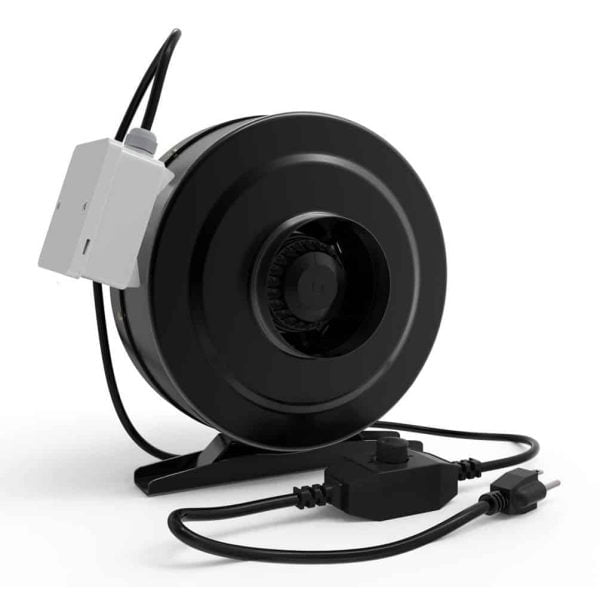
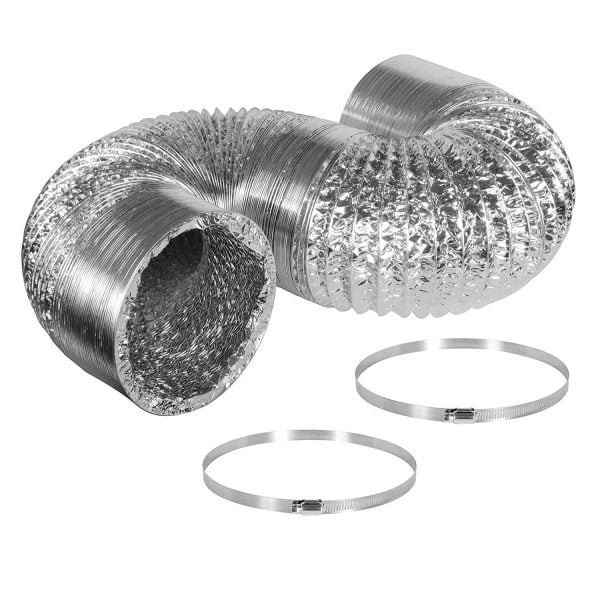
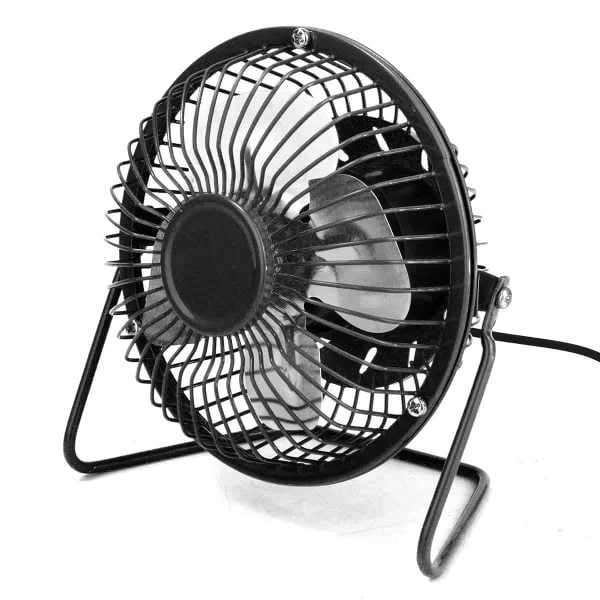
Once you have the right size tent set up where you want it, it’s time to start adding all your other components:
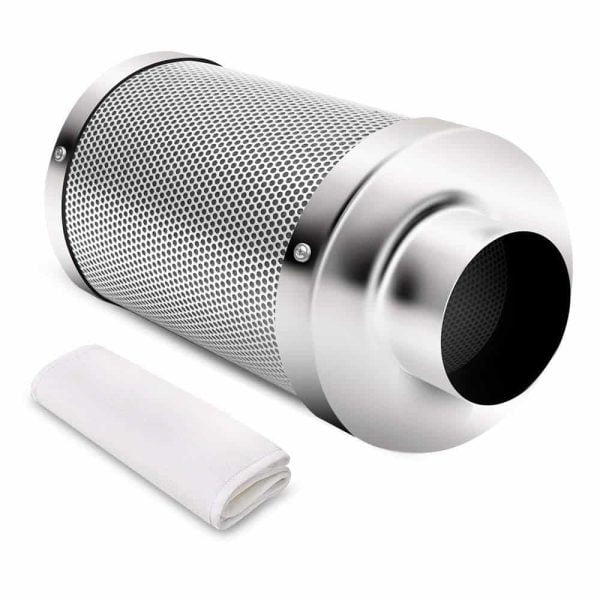
Carbon Filter Set Up
If you don’t want your entire house or garage to smell like dank weed, a carbon filter for the grow tent’s air exhaust is a crucial part of equipment. This filter will be hung inside your tent and will be connected to your extractor fan. You will need to find the same size filter as your fan. You will need to connect some vent tubing to the filter and fan with and a worm clamp or some duct tape. Basically, your fan will be sucking air from inside your tent, through the carbon filter. Your fan then pushes the carbon scrubbed air outside. A carbon filter will last you several grows but after a while it loses efficiency and you might want to replace it.
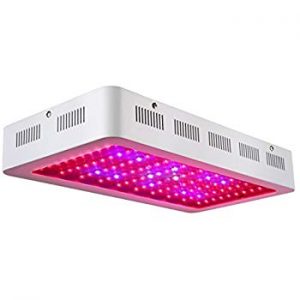
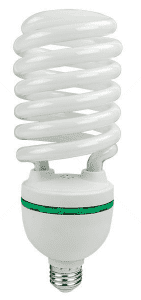
Grow Lights
There are few options when it comes to light. Three of the most common light sources are fluorescent, sodium, and LED.
They each have their pros and cons when it comes to price, power usage, and energy emitted. All grow lights are trying to emulate the sun as much as possible. They will never come close to matching the energy of our sun, but they will be able to give plants enough energy for an impressive harvest.
Do your research to find out what’s best for you. You will want to use a timer for your lights to emulate the day and night cycle. This also eliminates the need for you to have to switch the light on and off twice a day. I’ve never met anyone who does that, but I figure everyone is a beginner at some point, and might not think to use a timer. The amount of light you need is directly related to the area squared of your tent.
The absolute minimum wattage per square foot is 30 watts, a more optimum level would be between 50 and 80 watts.
So let’s say your tent is 4′ x 2′, its area is 8″ squared.
8 x 30 watts = 240 watts.
So, 240 watts is the minimum light requirement for a tent that size. The amount of power your lights are emitting will have a direct impact on the amount of bud you plant will produce. The more power, the bigger the buds.

What light is best for an indoor gardening setup?
Along with water and nutrients, light is something that cannabis just can’t live without.
If you do your gardening indoors, it’s worth putting some thought into making sure you get the right grow light for your tent setup.
There are a handful of options, all with different power and heat outputs, light spectrums, and sizes.
Here’s what to consider to choose the best light for your setup.
Light Type
The first thing to thing about is what type of light you want to use.
The most common choices are compact fluorescents (CFLs), light-emitting diodes (LED), and high-intensity discharge lights (HID), which include both sodium and metal halide bulbs – more on that later.
- CFLs for gardening purposes are like the CFLs you’ll see overhead in a school or office building, but smaller. They’re cheap, efficient, and easy to find, but there are some downsides.
For one, the light they emit is good for the vegetation stage, but isn’t sufficient during flowering. And, their relatively low power means your plants are going to have a small yield.
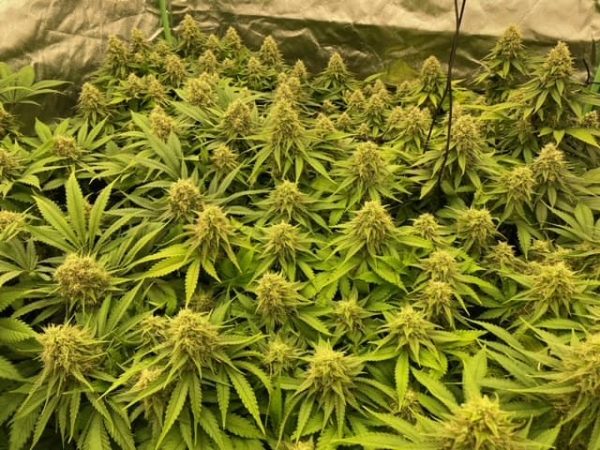
- LED Lights haven’t been used as long as other types of light for growing cannabis, but they’re getting very popular.
A grid of LED bulbs is much more efficient than other lights, and will save you money on electricity.
They also take up less space and give out less heat, and you can use one LED light throughout the vegetative and flowering stages.
The main downside is that they’re expensive, although electricity savings will eventually make up for the initial investment and more if you grow often.
HID lights of either type are cheap.
The downsides are that they’re bulkier than LEDs, take a lot of electricity to keep running, and they produce a lot of heat, which may mean that you have to upgrade your cooling and ventilation systems.
So, which lights are best for you?
If you can afford the initial investment or if you’re low on space, LEDs are a great choice.
If your grow room can benefit from some additional heat, or you don’t have a lot of money to invest right away, HIDs may be the best bet for you.
Or, if you’re just starting out growing and just want to try it out with the least money and hassle involved as possible, you can go for CFLs and upgrade later.
In the end, you’ll have to decide for yourself based on your situation.

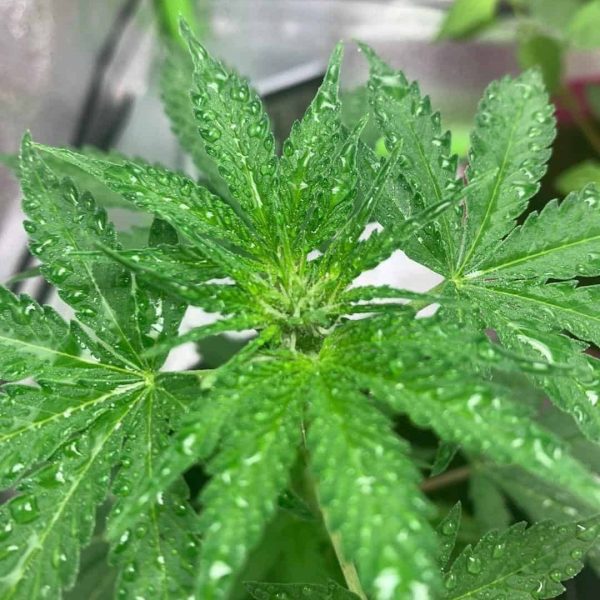
- HIDs are lamps that use a hood to reflect light, and bulbs that contain a gas that lights up as electricity flows through it.
You can get bulbs that are filled with either metal halide (MH) or high-pressure sodium (HPS).
MH bulbs produce a blueish light and are great for vegetative growth, while HPS bulbs produce yellow or orange light and are better for flowering.
You’ll need to set up an electrical ballast for either type to regulate the current going into the light, or buy a kit with the ballast included.
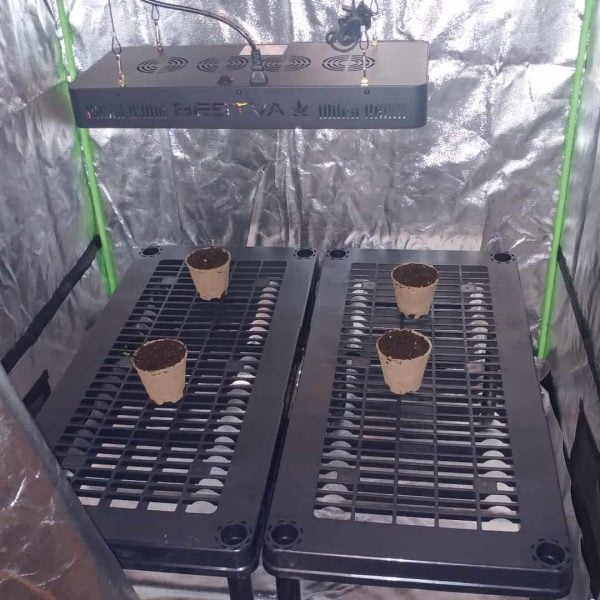
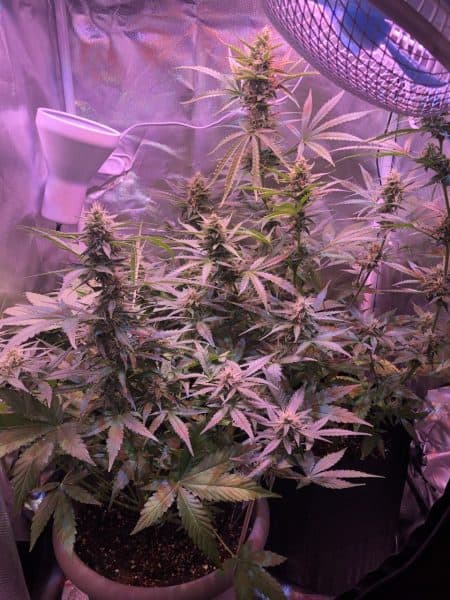
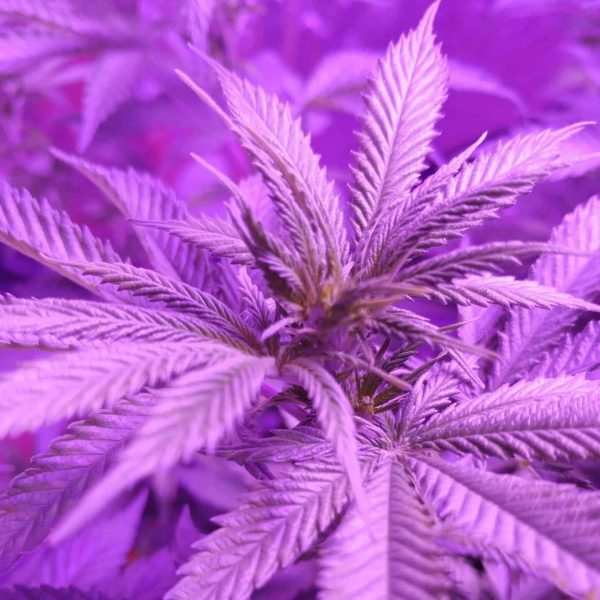
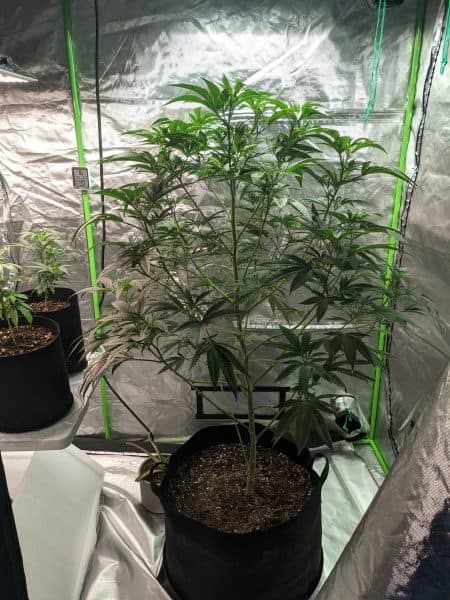
Grow Tent Heat and Humidity Control
Every tent should have a tool that measures the temperature and humidity.
Each phase of growth requires the tent to be within a certain range of temperature and humidity. Monitoring your heat and humidity are crucial to a successful crop. Large temperature leaps will slow your plant’s growth and stress them unnecessarily.
Depending on your geographical location, you will either need a humidifier or de-humidifier. You will want to keep your humidity levels at around 50% for your grow. Over the plant’s life, you will want to humidity to go from high to low.
Sprouts like high humidity around 70%.
For growing plants, it should be between 50% and 70%.
For flowering plants, 40% to 50% relative humidity is the optimum range.
Air humidity levels higher than 50% could facilitate mold or bud rot in the flowers. Temperature is another factor that will depend on your geographic location. You will want to keep the tent temperature between 19 and 29 degrees Celsius. By keeping it lower at night time it will help simulate the temperature drop in the evening outdoors. Sometimes a heater isn’t required, but if your tent is set up in a basement, it might get colder at night. Having a small heater with a thermostat that can turn on if the temperature drops under a certain value might be required.
Your lights will also produce heat. High-pressure sodium lights produce much more heat than LEDs. If your lights are raising the air temperature too much, you will have to increase your fan speed to help push out the hot air and suck in cooler fresh air. Having a temperature that’s too hot will stress your plants causing all sorts of problems like cat-tailing, and reduced potency.
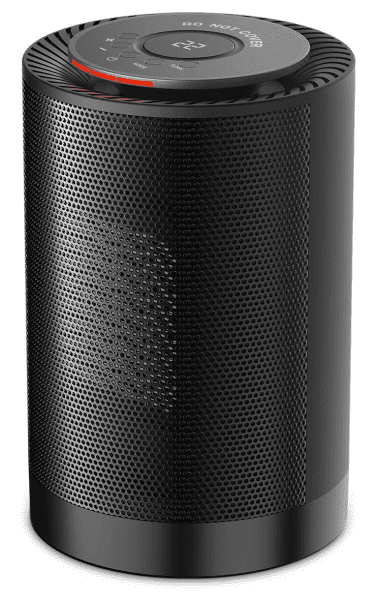
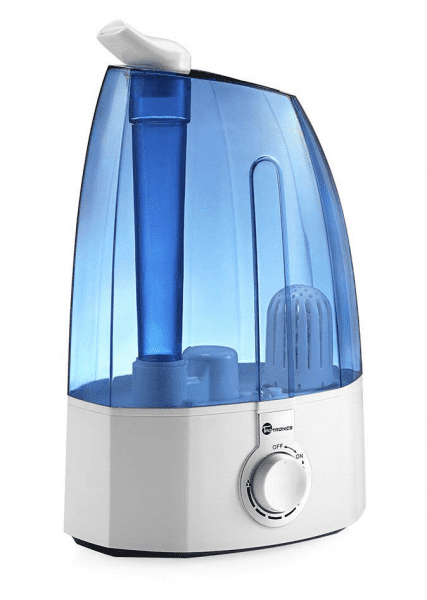
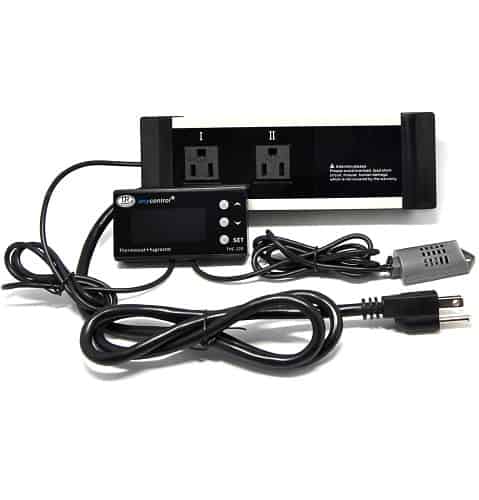
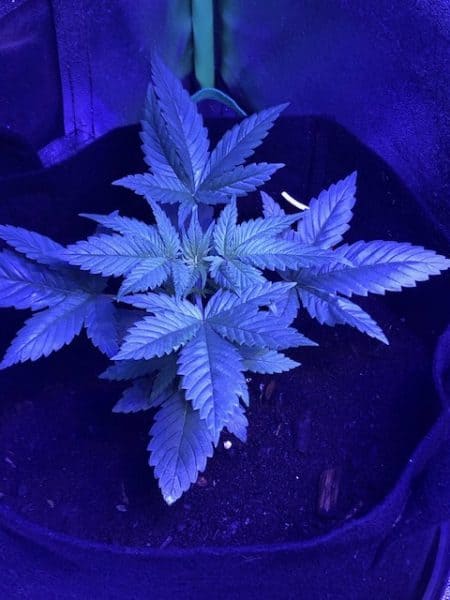
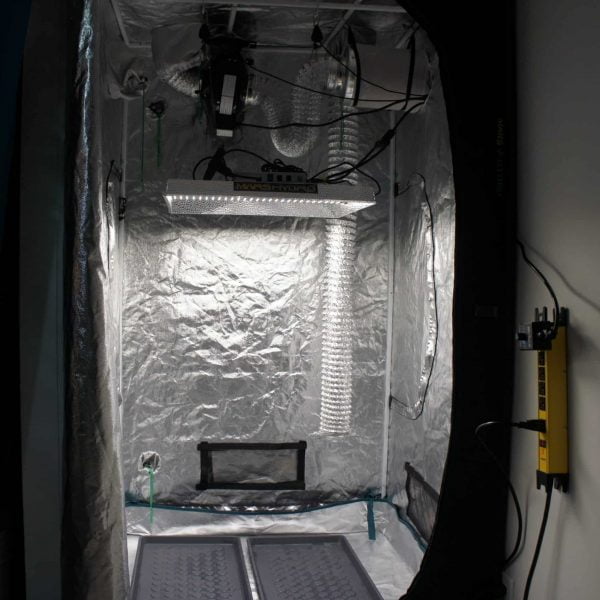
Other Things to Consider Adding to a Grow Tent
Automation can be a great way to reduce the amount of time and care required to tend to your plants. A bit of trial and error is required to create the right balance. You’re probably automating your lights already with a timer, but you can also automate your watering and temperature.
There are some premium systems that automate lights by fading them over time and moving them along an axis to simulate the movement of the sun. If you plan on being away from your plants for a few days, keep safety in mind. Sodium bulbs produce a lot of heat, and I personally don’t feel comfortable leaving them on while I’m away.
LEDs are great because they produce some heat but don’t get dangerously hot. Keep the number of electronics inside your tent limited, or at least watch that your wires aren’t sitting in water. I will feed my plants outside the tent to avoid any standing water in the tent that would add extra humidity.
Want to Learn More about Grow Tents?
This article just skims the surface of setting up your grow tent. If you want to learn more details about grow lights, download our free grow guide.
If you want to go beyond a simple tent setup and have the space, our Beginners Guide to Cannabis Cultivation will show you how to build the ideal growers room for you and your plants..
You just need to sign up for our newsletter. You can unsubscribe at any time, but you will miss out on our latest articles, offers, and other great information. Thanks for reading this article! If you found it helpful, please share it with your friends.
If you have any comments or questions, send us a message.
As always, Grow Good Weed!
Cheers,
Mike Drouin
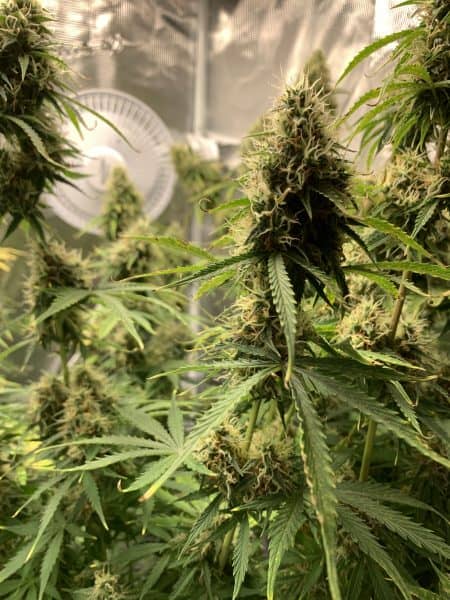
Mars Hydro Grow Tent Set Up Instructions
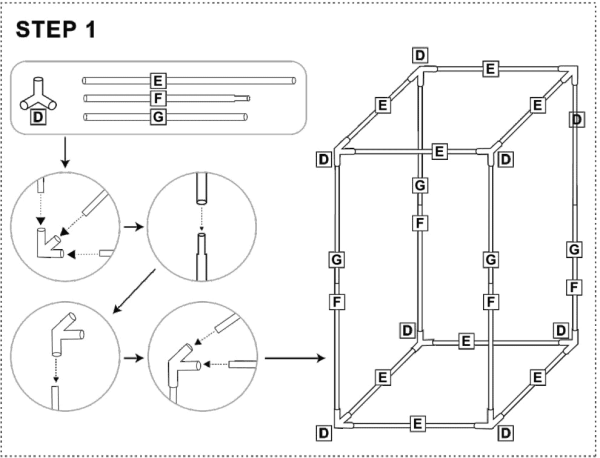
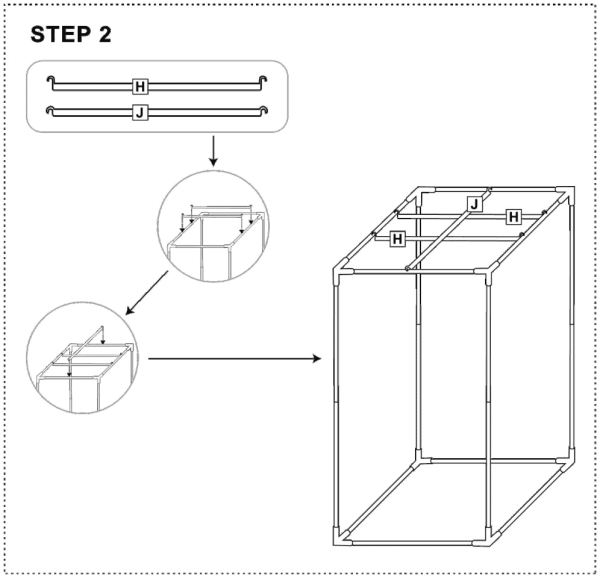
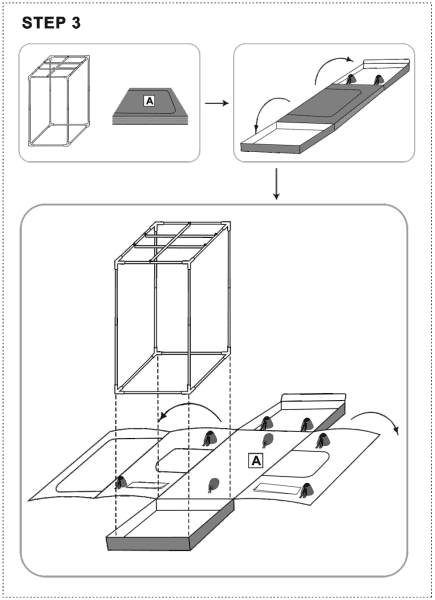
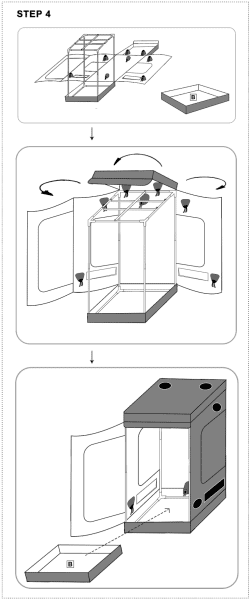
If you want to learn even more about growing good cannabis, we offer a free 40+ page guide full of images.
Now available on Amazon.
Sign up for our newsletter and download the digital copy today!
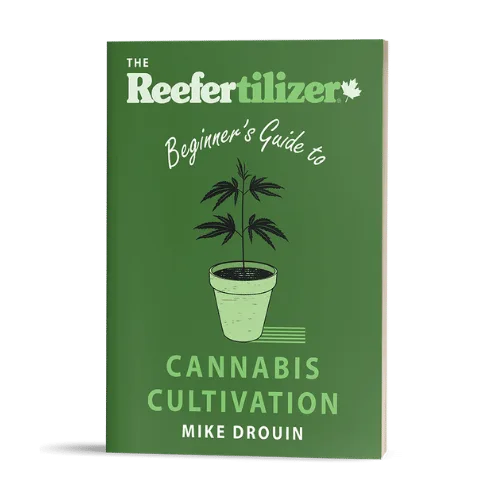
This guide will answer many questions about growing cannabis, like the following...
Selecting Seeds
Identify and Correct Problems
Maximize Yield
Much More...
Get a Chance to INSTANTLY WIN a Reefertilizer Nutrient Kit When You Sign Up.
Elijah Petty is a writer in the cannabis industry. He aims to use his platform to help educate people about cannabis and dispel some of the myths and misinformation that surround the plant.

Comments are closed.